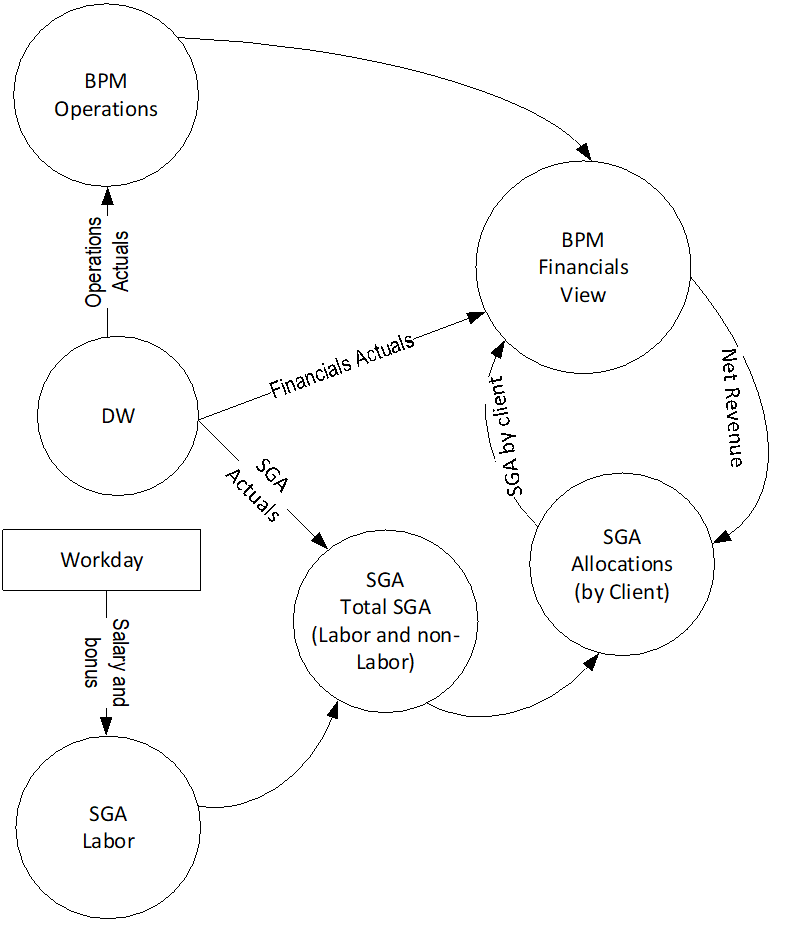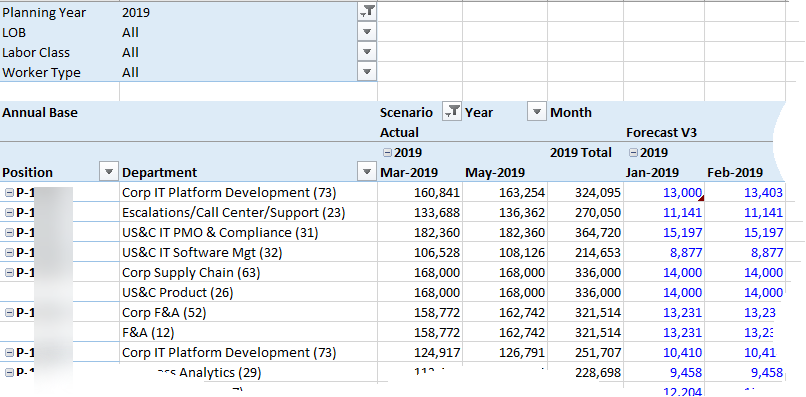Another Successful BPM Solution
Business Performance Management (BPM) is a methodology to help the company predict its performance. An integral part of a BPM strategy is a process for Budgeting, Planning, and Forecasting which is typically performed by the Finance department. When it comes to Finance, nothing is simple, and BPM is no exception. This diagram illustrates what typical data movement might look like to consolidate BPM areas into a consolidated Financials view.
In this case, a client wanted to automate budgeting for the Sales, General, and Administrative accounts (SG&A). To clarify the jargon, SG&A accounts capture overhead cost, such as salaries and bonus, and this client used Workday to record these expenses for each employee.
I typically see companies take two paths when it comes to BPM:
- Home-grown Excel-based solutions – You can do anything in Excel, but this path typically leads to fragile solutions that collapse under their weight.
- High-end planning solutions – To get out of the Excel “spreadmarts”, the temptation is to buy a high-end commercial software, such as Hyperion. This path leads to a very high initial investment and then even higher “customization”.
A better option that we pursued was to implement a customized solution based on the Microsoft BI platform. This approach reduces cost and allows users to make changes using the tool they like most: Excel.
For example, the screenshot below shows how the user can filter the report at any level and make changes to the forecast values (in blue color).
The main benefits of this solution are:
- Automated retrieval of actuals from the company’s data warehouse (also designed by Prologika)
- A highly-customized solution that meets complex business needs
- Management has immediate access to actuals, budget, and forecast
- Elimination of manual entry and data errors.
- Ability to analyze company’s performance by various dimensions.
How does your company do business performance management?







